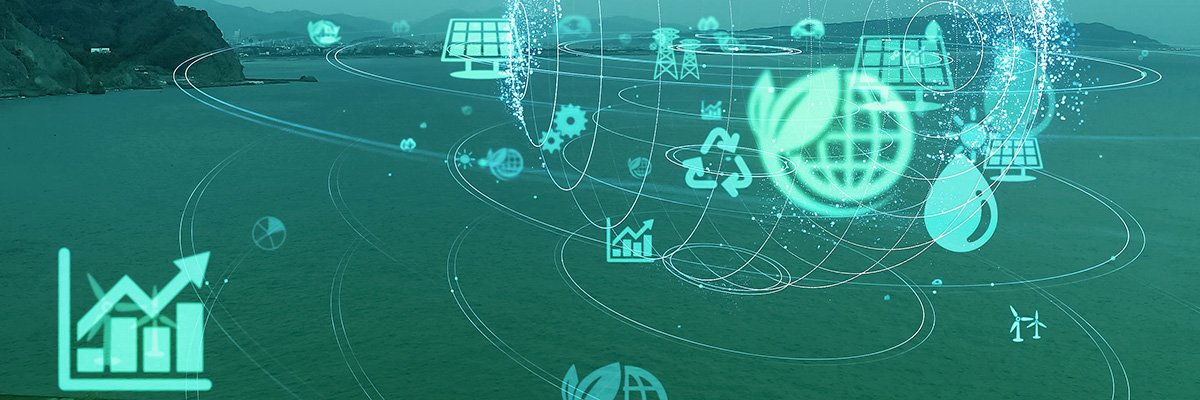Technology leaders have the potential to help their organizations meet new environmental sustainability demands. But they will need to understand the important steps.
Given increasing economic and geopolitical uncertainties, customers and stakeholders demand genuine and impactful environmental sustainability efforts that demonstrate an understanding of increasing regulations and a commitment to tomorrow’s needs.
IT contributes significantly to an organization’s overall carbon footprint, according to the new Forrester Research report “The State of IT Environmental Sustainability, 2023.” For example, IT has a major contribution to Scope 1 and Scope 2 releases in the financial services sector, which has a heavy data center backbone. Data center energy consumption represented 55% of Mastercard’s Scope 1 and Scope 2 emissions in 2021.
At a broad level, IT’s environmental impact – from carbon emissions to toxic waste – comes from three primary sources:
The resources and energy required for hardware manufacturing as well as software development. The energy consumption required to manage and maintain IT hardware and software over its lifetime. IT’s contribution to waste at the end of life.
Secondary sources of environmental impact and carbon emissions include the construction of IT-related facilities, such as data centers, and the transportation of IT-related goods.
Emerging technology will aid in the observability of new data, increase efficiency in facility management and manufacturing, and in some cases directly reduce carbon emissions.
As a result, tomorrow’s technology leaders must step up and coordinate partners, platforms and practices to advance their organization’s environmental sustainability goals. It’s not just about helping lower the carbon footprint of IT, but also about using IT to help with the sustainability efforts in any organization and any industry.
Steps to promote sustainability
While understanding the problem can seem overwhelming, there are steps organizations can take to improve sustainability readiness. CIOs and other technology leaders play a critical role in sustainability.
As they prepare to improve their organization’s sustainability readiness, technology leaders should consider five key areas of opportunity and actionable steps:
1. Set goals and add environmental metrics to strategic plans and budgets
Technical leaders must build sustainability outcomes into strategic planning and budgeting, as well as find ways to adapt or influence to improve future flexibility. The first step is to determine the sources of energy use or greenhouse gas (GHG) emissions.
Armed with this data, CIOs and other technical leaders can begin to tackle these efforts. This could include carbon or GHG targets for technology projects or cross-departmental collaboration on an internal carbon currency or budget.
It is important to include costs for tools, services and energy audits to support transformation efforts in organizational budgets. According to a study by Forrester Research, 32% of large firms say they include environmental sustainability criteria in all technology requests for proposals (RFPs).
2. Implement tools for environmental sustainability measurement and reporting
Energy, carbon and GHG reduction activities start with measurement. Unfortunately, many firms hold on to their spreadsheets and estimates longer than they should.
Although collecting, analyzing and acting on data is a core capability of most technology organizations, technology leaders say they lack the information needed to implement this type of optimization, much less replicate or automate it.
The key is to measure regularly and iteratively to improve the effectiveness of sustainability metrics, tools and processes. Once technology leaders have established what they measure and how they report, they should invest in environmental sustainability management software and tools.
Using a third-party assessment to shortlist sustainability management tools can be helpful. CIOs and other technical leaders should work with the sustainability team to adopt a framework to get started.
3. Integrate sustainability outcomes into transformation initiatives
Tech leaders have a front-row seat to appreciate the benefits at the intersection of sustainability and digital transformation.
Transformation initiatives provide an opportunity to calculate and optimize IT’s carbon footprint and eliminate a portion of your technical debt. As transformation work begins and evolves, leaders should take actions such as reviewing cloud and data center strategies, reviewing procurement strategies, and considering as-a-service models that can help extend the useful life of equipment and reduce e-waste or reduce management overhead.
Advanced firms include Scope 3 criteria in information requests, and sustainability proof points are displayed in proofs of concept, requests for information, RFPs and other practical demonstrations. Requesting information about the energy mix in data centers is a good place to start.
4. Evaluate the role of emerging technology in achieving sustainability goals
Explore emerging topics, such as carbon capture, use and storage, as well as new developments with environmental, health, safety and sustainability platforms that include technologies to measure and report on air quality, water resources and e-waste.
Tech leaders can consider new technologies such as AI and machine learning, as well as new technology paradigms such as open data and collaboration. It is important to balance the benefits and liabilities of the emerging technology portfolio while exploring the latest technologies such as carbon capture, high-performance computing and high-efficiency code.
5. Seize innovation and partnership opportunities to improve sustainability
Technology leaders and their teams have a coordinating and collaborative role to play in assessing innovation and partner opportunities from a sustainability perspective.
If the CIO, CTO, chief data officers or other technology leader oversees enterprise teams or exploration groups tasked with evaluating partners or innovation networks, they can add environmental sustainability criteria to these activities, as well as the positive and negative impacts of new technologies on your environmental footprint.
It is especially important now to consider that the potential partner’s Scope 1 footprint will become part of the leader’s organizational Scope 3 footprint. Technical leaders can challenge their innovation teams to eliminate Scope 1 releases, as well as share R&D and product innovations internally.
Finally, as leaders move toward regenerative circular operating and business models, they can engage with communities and alliances such as the Green Software Foundation or the Clean Energy Buyers Association.
Technology leaders have a critical role to play in promoting sustainability for any organization. Specific actions may include procuring green energy for data centers, developing software in a more environmentally conscious way, greening application architecture and embedding sustainability measures in every digital transformation project.
By taking actions that include environmental considerations, technology leaders ensure that their organization elevates sustainability to an enduring priority.
About the Author Abhijit Sunil is an analyst serving enterprise leaders. His research focuses on green IT, technology sustainability strategy, data centers and cloud optimization, emerging technologies and climate action, the sustainability professional services market, environmental reporting and organization, and the ROI and business value of environmental sustainability investments.
Disclaimer for Uncirculars, with a Touch of Personality:
While we love diving into the exciting world of crypto here at Uncirculars, remember that this post, and all our content, is purely for your information and exploration. Think of it as your crypto compass, pointing you in the right direction to do your own research and make informed decisions.
No legal, tax, investment, or financial advice should be inferred from these pixels. We’re not fortune tellers or stockbrokers, just passionate crypto enthusiasts sharing our knowledge.
And just like that rollercoaster ride in your favorite DeFi protocol, past performance isn’t a guarantee of future thrills. The value of crypto assets can be as unpredictable as a moon landing, so buckle up and do your due diligence before taking the plunge.
Ultimately, any crypto adventure you embark on is yours alone. We’re just happy to be your crypto companion, cheering you on from the sidelines (and maybe sharing some snacks along the way). So research, explore, and remember, with a little knowledge and a lot of curiosity, you can navigate the crypto cosmos like a pro!
UnCirculars – Cutting through the noise, delivering unbiased crypto news















